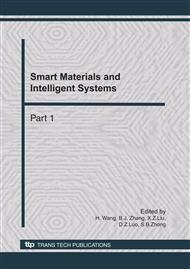p.1415
p.1420
p.1424
p.1429
p.1434
p.1439
p.1445
p.1450
p.1454
Tensile Tests on High Strength Steel Q345 Notched Plates with the Moderate Thickness
Abstract:
In order to study fracture mechanics of high strength steel with the moderate thickness, fracture tests were performed on 10 elliptical notched plates with the thickness of 16mm fabricated from high strength steel Q345. The effect of notch sharpness (the ratio of the length of short axis to that of long axis of elliptic notch, b/a) and notch depth (the ratio of the length of long axis of elliptic notch to the width of plate, a/w) on fracture model of high strength steel was examined. Test results show that the first crack initiates at the notch edge. The fracture ductility is low for the specimens with the sharper notch (a smaller ratio b/a), and the point of crack load lies in hardening phase of load-displacement curve. The fracture ductility is high for the specimens with the obtuse notch (a bigger ratio b/a), and the point of fracture load lies in necking phase of load-displacement curve. There is no qualitative relationship of fracture ductility and the notch depth (a/w). The ultimate strength of notched plates is independent of the notch sharpness (b/a) and notch depth (a/w).
Info:
Periodical:
Pages:
1450-1453
Citation:
Online since:
October 2010
Authors:
Price:
Сopyright:
© 2011 Trans Tech Publications Ltd. All Rights Reserved
Share:
Citation:


